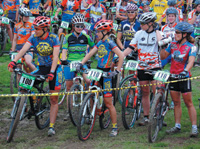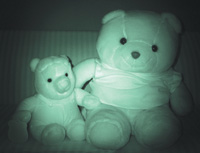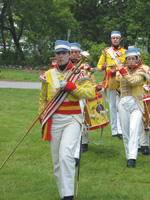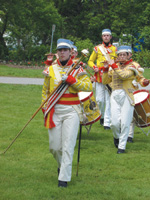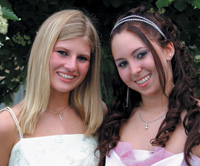Sony Cyber-shot DSC-V1 Digital Camera; 5-Mp Prosumer Camera With 4x Carl Zeiss Zoom, Plus Exclusive Night Shooting Modes
The most prolific manufacturer
of digital cameras, Sony was also one of the first to introduce a 5-megapixel
model, the DSC-F707 in 2001, later replaced by the F717. The company's
latest high-end 5-Mp camera, the DSC-V1, should become more popular,
thanks to its smaller size and lighter weight. This model is absolutely
loaded with capabilities, including most of the features that we expect
in an SLR camera--plus some night shooting options exclusive to
Sony. |
|||||
Camera Characteristics
And Capabilities |
|||||
Quick Draw |
|||||
Evaluation: Simple
to operate in its basic modes, the DSC-V1 becomes more complicated when
you want to access the subject specific Program modes and most of the
advanced capabilities. Frankly, too many features require access to the
electronic menus. Hunting for the desired option is slow, and some features
are difficult to find. Because operation is not intuitive, a full study
of the instruction manual is essential in order to exploit this multi-talented
camera's vast potential. |
|||||
Anyone who frequently takes flash photos in low-light will certainly appreciate hologram autofocus. In very dark conditions, the NightFraming mode can also be useful. While it's not easy to frame a subject in darkness using the rather dim infrared image on the LCD screen, it is certainly possible. In my tests, both focus and flash exposure were close to perfect with subjects that were up to 6 feet from the camera. Because the NightShot IR mode generates pictures that are green-toned, grainy, and dark around the edges, this system is more of a novelty. Field Test Results
|
|||||
In multi-pattern metering,
the camera tended to underexpose light tones and overexpose mid tones
slightly, easily corrected with exposure compensation. The forced flash
system was useful for fill-lighting in bright conditions, producing a
fairly subtle effect with the output set to "low." With its
TTL flash system, still rare in prosumer cameras, this Sony model certainly
produced pleasing flash photos both indoors and out. Image Quality Assessment
|
|||||
Final Evaluation PROS CONS Facts Contact |

